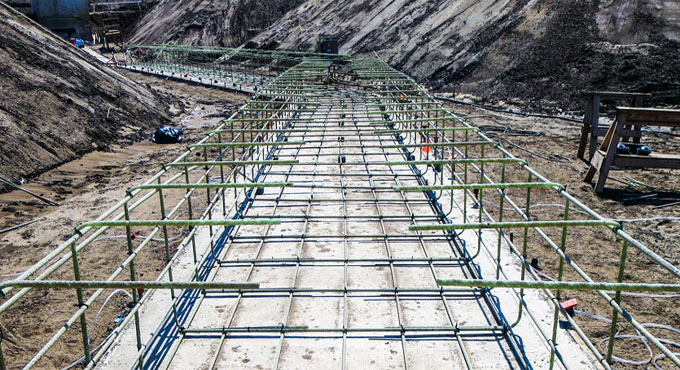
Benefits of Fibre reinforced polymers (FRP) for concrete construction
Fibre reinforced polymers (FRP) have been using successfully for the repair and retrofit of concrete structural components as they contains some strong features like lightweight, high strength and resistance to chemicals. In fabric form, they provide supreme adaptability. Besides, the fibres can be headed in any direction and their application is improved. It turns FRP specifically applicable for emergency repairs where damage becomes multi-directional and speed of strength restoration is significantly vital.
The strength properties of FRPs is very strong and for this reason it is mostly recommended for designing the structures. A material?s strength is analyzed with its ability to withstand a load devoid of extreme deformation or failure. When an FRP specimen is examined in axial tension, the applied force per unit cross-sectional area (stress) is equal to the ratio of change in a specimen?s length to its original length (strain). When the applied load is isolated, FRP get backs to its original shape or length. To be specific, FRP reacts linear-elastically to axial stress.
The reaction of FRP to axial compression is dependent on the relevant proportion in volume of fibres, the properties of the fibre and resin, and the interface bond strength. FRP composite compression failure happens if the fibres expose extreme (frequently sudden and dramatic) lateral or sides-way deflection known as fiber buckling.
FRP?s reaction to transverse tensile stress is primarily based on the characteristics of the fiber and matrix, the interaction among the fiber and matrix, and the strength of the fiber-matrix interface. Normally, tensile strength in this direction is very weak. Shear stress is caused in the plane of an area if exterior loads be likely to produce two segments of a body to slide over one another. The shear strength of FRP can?t be measure easily. Usually, failure will happen inside the matrix material alongside the fiber. FRP?s high strength properties are also supported with superior stability and corrosion resistance.
Besides, their high strength-to-weight ratio brings huge advantags; a member made of FRP can withstand larger live loads because its dead weight does not considerably affect the loads that will be sustained by it. Other exciting features range from simple installation process, adaptability, anti=seismic behaviour, electromagnetic neutrality, excellent fatigue behaviour, and fire resistance.
FRP also contain some negative features like high cost, brittle behaviour, prone to deformation under long-term loads, UV degradation, photo-degradation (from exposure to light), temperature and moisture effects, lack of design codes and scarcity of awareness.
The advent of new adhesives that facilitate FRP to be affixed with wet concrete surfaces and it becomes easier to execute emergency repairs on sub-structure elements cost-effectively. If FRP is utilized it will be possible to change the cross-section and employ bi-directional layers that could re-establish lost tensile strength whereas arrange same lateral support to the longitudinal steel. Besides, the use of a protective UV (ultra-violet) coating on the wrap of the right colour will leave the repaired pile impossible to differentiate from other undamaged piles.
Article Source: www.engineeringcivil.com


